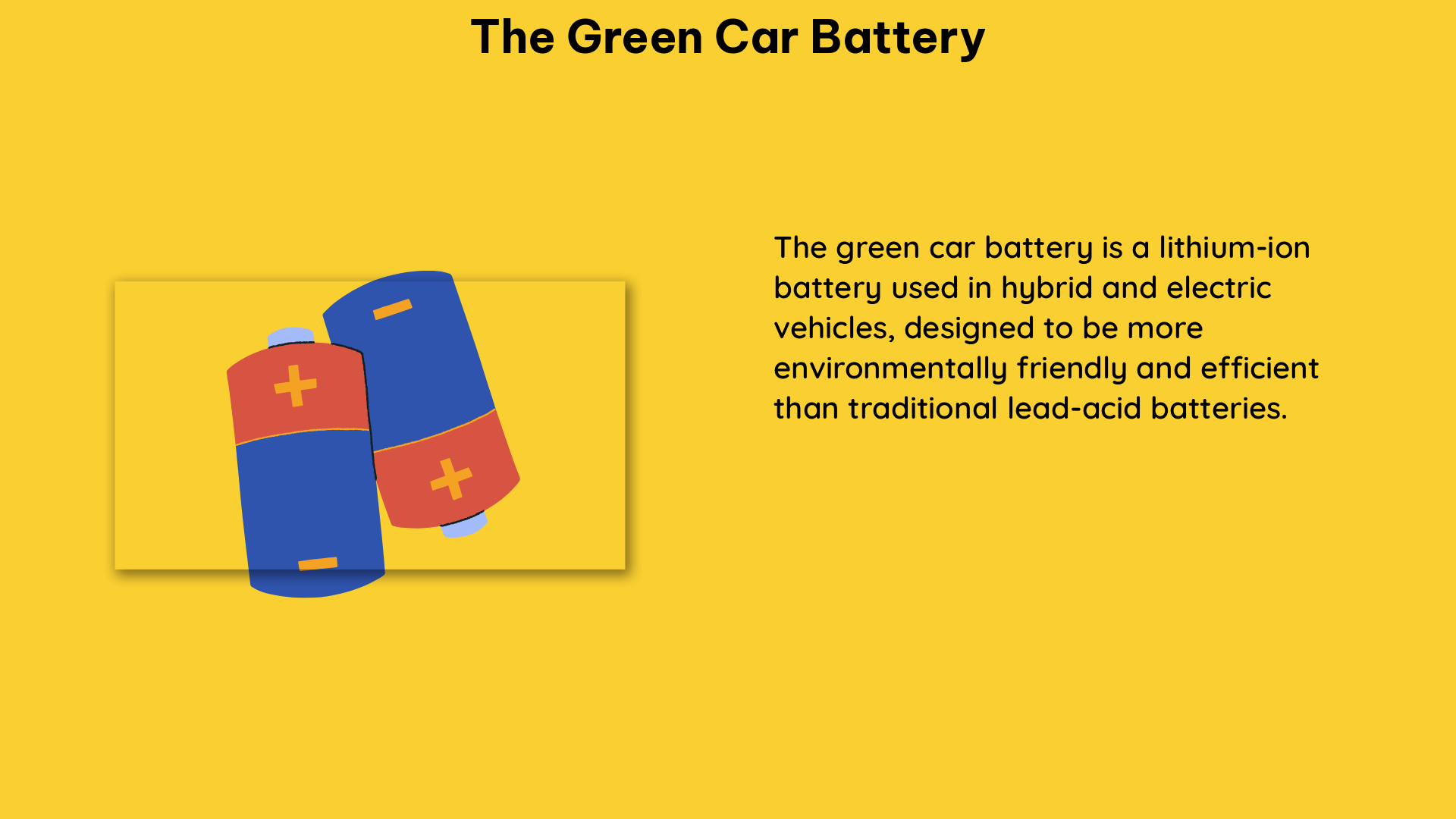The green car battery, also known as the electric vehicle (EV) battery, is the heart and soul of an EV, providing the necessary power to propel the vehicle forward. These batteries are typically lithium-ion based, offering high energy density, long cycle life, and low self-discharge rates. However, the manufacturing process of these batteries can have a significant environmental impact, with estimates suggesting that producing a single battery for an EV can emit between 73 and 156 kg of CO2 equivalent.
Technical Specifications of the Green Car Battery
The EV battery is typically rated in terms of several key parameters:
- Voltage: The battery voltage can range from 200 to 400 volts, with higher voltages generally providing more power and efficiency.
- Current: The battery current can range from 20 to 200 amps, with higher currents enabling faster charging and more powerful acceleration.
- Impedance: The battery impedance can vary depending on the chemistry and construction, but it is typically in the range of 5 to 20 milliohms. Lower impedance is desirable for better power delivery and efficiency.
- Capacity: The battery capacity can range from 20 to 100 kilowatt-hours (kWh), with higher capacities offering longer driving ranges.
- Lifespan: The battery lifespan can range from 5 to 15 years or more, depending on factors such as usage patterns, temperature, and maintenance.
DIY Installation and Maintenance of the Green Car Battery

When it comes to DIY installation and maintenance of the green car battery, it is crucial to exercise caution and follow the manufacturer’s instructions closely. The battery contains hazardous materials and can pose a risk of electrical shock, so proper safety equipment, such as gloves and eye protection, is a must.
During installation, ensure that the battery is properly secured and insulated to prevent damage and reduce the risk of electrical faults. Improper installation can lead to issues like battery degradation, thermal runaway, and even fire hazards.
Monitoring and Maintaining the Green Car Battery’s Performance
To ensure the longevity and optimal performance of the EV battery, it is essential to monitor and maintain its state of charge (SOC), state of health (SOH), and state of safety (SOS). This can be achieved through the use of a battery management system (BMS), which is typically integrated into the vehicle’s onboard diagnostics (OBD) system.
The BMS provides real-time monitoring and control of the battery cells and pack, using sensor data (voltage, current, and temperature) to estimate the battery’s states (SOC, SOH, SOS, etc.) based on pre-trained models. Cell balancing and thermal management are fundamental to the safe operation of the battery system.
Cloud-Based Battery Management Systems (CBMS)
In addition to the onboard BMS, it is possible to utilize cloud-based battery management systems (CBMS) to further analyze and optimize the battery’s performance. The CBMS can offer a viable path for analyzing and interpreting learning tools for battery performance, which plays a key role in optimizing the protocols used in prognostics and health management.
By leveraging the power of cloud computing and advanced data analytics, the CBMS can help identify and address any issues with the battery before they become critical, ultimately optimizing the battery’s performance and lifespan.
Conclusion
The green car battery is a critical component of EVs, providing the necessary power to drive the vehicle. While the manufacturing of these batteries can have a significant environmental impact, they offer many benefits in terms of performance, longevity, and low emissions.
To ensure the safe and efficient operation of the EV battery, it is essential to monitor and maintain its SOC, SOH, and SOS using a BMS or CBMS, and to follow the manufacturer’s instructions for installation and maintenance. By understanding the technical specifications and proper care of the green car battery, EV owners can maximize the performance and lifespan of this vital component.
References
- Zhao, J., Burke, A.F., Electric Vehicle Batteries: Status and Perspectives of Data-Driven Diagnosis and Prognosis, Batteries, 2022, 8, 142.
- Tektronix, EV Battery Testing, Tektronix, 2022.
- MIT Climate, How much CO2 is emitted by manufacturing batteries?, MIT Climate, 2022.
- Drake, J., Cloud Computing: The Business Perspective, McGraw-Hill Education, 2014.
- Al-Fuqaha, A., et al., Internet of Things: A Survey on Enablers, Architectures, and Applications, IEEE Communications Surveys & Tutorials, 2015, 17(4), 2347-2376.

The lambdageeks.com Core SME Team is a group of experienced subject matter experts from diverse scientific and technical fields including Physics, Chemistry, Technology,Electronics & Electrical Engineering, Automotive, Mechanical Engineering. Our team collaborates to create high-quality, well-researched articles on a wide range of science and technology topics for the lambdageeks.com website.
All Our Senior SME are having more than 7 Years of experience in the respective fields . They are either Working Industry Professionals or assocaited With different Universities. Refer Our Authors Page to get to know About our Core SMEs.